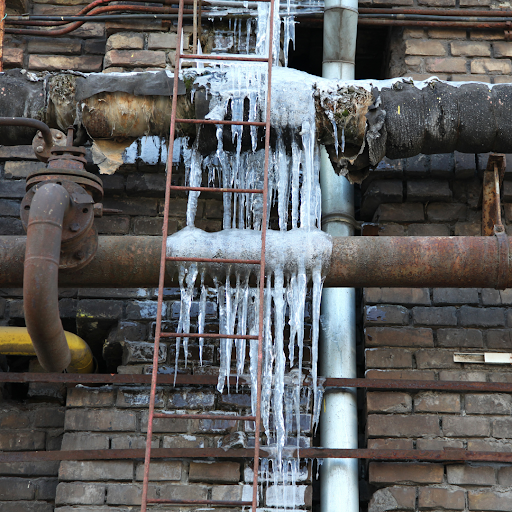Shielding Your Pipes from Cold Weather Issues: Key Approaches
Shielding Your Pipes from Cold Weather Issues: Key Approaches
Blog Article
They are making a number of great annotation about How To Avoid Freezing Pipes in general in this article on the next paragraphs.

Winter can wreak havoc on your pipes, particularly by freezing pipes. Below's exactly how to avoid it from happening and what to do if it does.
Introduction
As temperature levels decline, the danger of frozen pipes increases, possibly causing expensive repairs and water damages. Comprehending how to stop frozen pipes is vital for property owners in chilly climates.
Comprehending Frozen Pipelines
What causes pipelines to freeze?
Pipes ice up when subjected to temperature levels below 32 ° F (0 ° C) for prolonged durations. As water inside the pipelines freezes, it expands, taxing the pipe wall surfaces and possibly causing them to burst.
Risks and damages
Frozen pipelines can lead to water disruptions, residential property damages, and costly repair work. Burst pipelines can flooding homes and trigger considerable structural damage.
Signs of Frozen Pipeline
Identifying icy pipes early can prevent them from breaking.
How to recognize frozen pipelines
Search for lowered water flow from taps, unusual smells or noises from pipelines, and noticeable frost on subjected pipelines.
Avoidance Tips
Insulating prone pipelines
Wrap pipelines in insulation sleeves or make use of heat tape to secure them from freezing temperature levels. Focus on pipes in unheated or exterior areas of the home.
Home heating strategies
Maintain indoor areas appropriately heated up, especially locations with plumbing. Open up cabinet doors to permit warm air to flow around pipes under sinks.
Shielding Outdoor Pipes
Garden pipes and outdoor taps
Disconnect and drain yard pipes before winter months. Mount frost-proof faucets or cover outdoor faucets with protected caps.
What to Do If Your Pipelines Freeze
Immediate activities to take
If you think icy pipes, maintain faucets open to alleviate stress as the ice thaws. Use a hairdryer or towels taken in warm water to thaw pipes gradually.
Long-Term Solutions
Structural modifications
Take into consideration rerouting pipes far from exterior walls or unheated locations. Include extra insulation to attics, basements, and crawl spaces.
Updating insulation
Buy high-quality insulation for pipes, attics, and wall surfaces. Proper insulation helps maintain constant temperatures and minimizes the danger of icy pipes.
Final thought
Stopping icy pipelines calls for aggressive actions and fast actions. By recognizing the reasons, indications, and preventive measures, homeowners can safeguard their plumbing throughout cold weather.
5 Ways to Prevent Frozen Pipes
Drain Outdoor Faucets and Disconnect Hoses
First, close the shut-off valve that controls the flow of water in the pipe to your outdoor faucet. Then, head outside to disconnect and drain your hose and open the outdoor faucet to allow the water to completely drain out of the line. Turn off the faucet when done. Finally, head back to the shut-off valve and drain the remaining water inside the pipe into a bucket or container. Additionally, if you have a home irrigation system, you should consider hiring an expert to clear the system of water each year.
Insulate Pipes
One of the best and most cost-effective methods for preventing frozen water pipes is to wrap your pipes with insulation. This is especially important for areas in your home that aren’t exposed to heat, such as an attic. We suggest using foam sleeves, which can typically be found at your local hardware store.
Keep Heat Running at 65
Your pipes are located inside your walls, and the temperature there is much colder than the rest of the house. To prevent your pipes from freezing, The Insurance Information Institute suggests that you keep your home heated to at least 65 degrees, even when traveling. You may want to invest in smart devices that can keep an eye on the temperature in your home while you’re away.
Leave Water Dripping
Moving water — even a small trickle — can prevent ice from forming inside your pipes. When freezing temps are imminent, start a drip of water from all faucets that serve exposed pipes. Leaving a few faucets running will also help relieve pressure inside the pipes and help prevent a rupture if the water inside freezes.
Open Cupboard Doors
Warm your kitchen and bathroom pipes by opening cupboards and vanities. You should also leave your interior doors ajar to help warm air circulate evenly throughout your home.

As a passionate reader about 6 Ways to Prevent Frozen Pipes, I imagined sharing that chunk was really helpful. So long as you enjoyed reading our page kindly consider to pass it around. Thanks a lot for being here. Come back soon.
Book Inspection Report this page